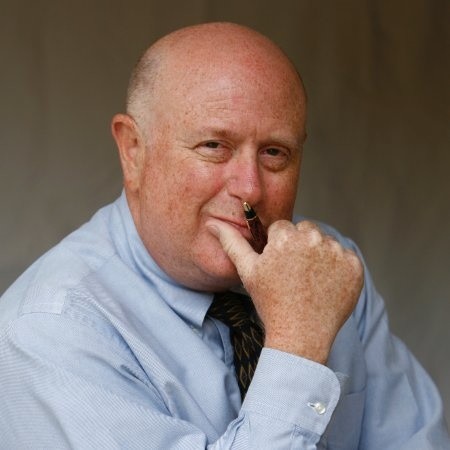The U.S. Army just released an RFP for $7 billion in new renewable energy contracts. The ramifications created from this DOD effort for your home or business could be as meaningful as the military's leadership implementing the world wide web.
The U.S. military is the world's largest fuel consumer. In 2011, the U.S. military spent over $13 billion on energy. The DOD in cooperation with DOE has initiated a Net Zero Initiative with the goal of "producing as much energy (focus on renewable energy) on or near the installation as it consumes in its buildings and facilities." The objective is to create a repeatable template for planning and developing net zero energy installations across the services. Their performance goal is to have 30 Net Zero Energy facilities by 2030.
The template model can lower costs by increasing economies of scale.
The DOD has become the economic and technological engine of the smart and renewable microgrid. The DOD is pursuing an integrated microgrid through a three tier process deploying energy efficiency, distributed generation and smart operating systems to achieve a cost competitive, high reliability alternative to utility supplied electricity.
Step One: energy efficiency
Load reduction or energy efficiency is the highest priority in the DOD approach to building a microgrid. The DOD is rightly focusing upon energy efficiency because of its superior financial paybacks. For example, replacing Edison-era lighting technology with today's energy efficient lighting systems can generate a 100 percent return on the cost of investment in as little as six months depending upon lighting levels and utility rates. The DOD has set ambitious goal of 30 percent reductions in building energy use.
Step Two: renewable energy
Renewable energy is the second step in the DOD process of building an integrated mircogrid platform. They are investing in a range of renewable technologies including solar, wind, biofuels, landfill gas and fuel cells. One example is the installation of solar power at the U.S. Air Force Academy in Colorado Springs. This is a 6 MW system producing 11.6 million kWh of electricity annually at a 25-year levelized cost of 6 cents per kWh. The system is projected to save $1 million annually in electricity costs. Today this system accounts for 11 percent of total Academy electrical consumption but that percentage is expected to rise as energy efficiency actions are taken that will lower the overall electrical load at the facility.
Step Three: smart
The real technology barrier to microgrids is getting all the various onsite systems to work together to achieve reliability at least as high as that supplied by the local utility. The technology challenge is integrating a mix of existing equipment and new equipment into one integrated smart system. Solutions to the challenge are being pursued by some of the biggest names in technology including GE, Honeywell, Cisco, MicroSoft and others as well as start-ups re-imaging how machines talk to one other through apps.
The implications of DOD's efforts holds the potential to transform our country's electrical system from the centralized power plant model using alternating current transmission and distribution we've been using since the age of Edison and Westinghouse. From a technology perspective, a future of lower cost, higher reliability and cleaner mircogrids is available now. Global manufacturing competition is plunging solar prices into price parity with utility systems. Apps are available now to download onto your smartphone to control your home or office energy consumption in aligment with your real time expectations for cost control and comfort. Appliance manufacturers are beginning to offer micro-chips built into their refrigerators, dishwashers, dryers and stoves that enable connectivity via the growing numbers of smart meters.
DOD's Net Zero Energy Initiative is now the leadership model for integrating these technologies, including the challenge of collaboration with electric utilities. And it may be the utilities rather than technology that become the biggest barrier to implementing cost competitive, clean and reliable microgrid technologies.
Regulators are also challenged to figure out financing an integrated utility system that adds significant value as a real time battery back up to local microgrids when these microgrids create significant revenue erosion under existing rate designs.
While the utilities and their regulators work toward answering their questions the DOD, technology companies and other pioneering customers are implementing systems in pursuit of economies of scale solutions that hold real promise for changing how your business uses energy on a scale similar to the business changes created from the computer, smartphone and the Internet.
This video with Peter Asmus, Senior Analyst for PikeResearch at the Renewable Energy World North American Conference provides additional insights and details on DOD's strategy for reducing energy costs, emissions and force threats:
http://youtu.be/wxEyqt8F3BY
Bill Roth is the founder of Earth 2017. His book, The Secret Green Sauce, profiles how-to case studies of businesses making money going green. As the green business coach for the U.S. Hispanic Chamber of Commerce Foundation Green Builds Business program sponsored by Walmart he is coaching of hundreds of business owners on best practices for making money and a difference.

Bill Roth is a cleantech business pioneer having led teams that developed the first hydrogen fueled Prius and a utility scale, non-thermal solar power plant. Using his CEO and senior officer experiences, Roth has coached hundreds of CEOs and business owners on how to develop and implement projects that win customers and cut costs while reducing environmental impacts. As a professional economist, Roth has written numerous books including his best selling The Secret Green Sauce (available on Amazon) that profiles proven sustainable best practices in pricing, marketing and operations. His most recent book, The Boomer Generation Diet (available on Amazon) profiles his humorous personal story on how he used sustainable best practices to lose 40 pounds and still enjoy Happy Hour!














